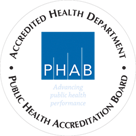Employers, community groups and faith communities can make it easier for people to make healthy food choices by providing healthy food at meetings and other events they sponsor.
These suggestions can be used for selecting foods, beverages, and snacks for meetings and other events. Providing options helps everyone to improve their overall health. Mississippi is fighting obesity, and the role of food choices and physical activity in the prevention of many diseases is becoming more apparent.
Food Guidelines
- Serve low-calorie, low-fat, and low salt/sodium foods.
- Serve whole grains, fruits and vegetables whenever possible.
- Serve small portions: cut items in halves or quarters.
- Serve milk (fat-free or 1%), 100% fruit or vegetable juice, water or iced tea (unsweetened) instead of soft drinks.
- Lunch and dinner do not have to include a heavy dessert. Fresh fruit, a fruit crisp or cobbler, angel food cake with a fruit topping or small cookies, are excellent choices.
- Include a vegetarian option at meals.
- Provide fat-free or low-fat milk for coffee rather than cream (evaporated skim milk also works well for coffee).
- Registration forms should provide space to indicate food allergies or dietary restrictions.
- Provide pitchers and bottles of water.
Food Suggestions
Breakfast
- Fresh fruits — whole or cut.
- Low fat yogurt, possibly a yogurt bar with fruit toppings.
- Fruit bread, muffins, or bagels.
- Low-fat granola bars.
- Whole grain dry cereal with fat-free or 1% milk.
- Waffle bar with puréed fruit topping instead of syrup.
Breaks
- Fresh fruit, whole or cut up (with a yogurt dip).
- Mini whole grain muffins and breads and mini bagels with jelly or jams. Avoid danishes, croissants or doughnuts.
- Low-fat yogurt.
- Pretzels, hot pretzels (cut in pieces) with mustard.
- Lightly seasoned popcorn.
- Graham crackers, fig newtons, granola bars, small cookies.
- Dried fruit or trail mix.
- Raw vegetables with low-fat dip.
Lunch & Dinner
- Select an entrée with no more than 12-15 grams of fat, and with no fried food or gravy. Serve a 2 to 4 oz. portion of meat.
- Always offer a vegetarian entrée.
- Include at least one low calorie vegetable (fresh or cooked) with no butter or cream sauces added.
- Serve salads with dressing on the side; offer at least one low-fat or fat-free choice.
- Include fresh fruit, fruit salad, or a vegetable salad.
- Include whole grain breads, or skip the bread.
- Choose lower fat/lower calorie desserts: cut fruit with yogurt toping, low-fat ice milk, frozen yogurt, sherbet, or sorbet, or angel food cake with fruit topping.
- If sandwiches are made ahead of time, have them presented in halves, so people can take a smaller portion.
- Provide raw vegetables or pretzels instead of chips or fries.
- Include fresh fruit or fruit salad as dessert.
- Box lunches should include fruit and a vegetable salad instead of chips and cookie.
- Offer large lettuce salads with meat and fruits for an entire meal.
Physical Activity
If you incorporate physical activity breaks into your meetings, you will find that participants have increased energy, attention span and participation, and less fatigue. Taking a few minutes to move around can save much time in lost productivity.
General Guidelines
- If possible, choose a location for your meeting where participants can easily and safely take a walk. If you are holding an overnight meeting, choose a place where participants can walk to dinner, shopping, etc. rather than drive.
- Provide participants with maps of the area showing good walking routes, parks, or fitness centers. Ask centers for free visits for participants of the meetings.
- Choose a hotel that has good fitness facilities: a fitness room, pool, etc. Include information about these facilities in materials you send to participants.
- Organize an early morning physical activity opportunity. The easiest thing to organize is a morning walk.
- Encourage participants to take the stairs. Place signs near the elevators telling people where the stairs are.
- Consider telling people that the dress code for the meeting is casual; this allows people to move around freely.
- Encourage networking by suggesting that people take a walk together and talk about their common interests.
- Schedule brief activity breaks in the morning and afternoon. Have participants stand up and walk in place or have someone lead a stretching break. People will be better able to pay attention for the rest of the meeting.
Activity Breaks
- For two-hour meetings, include a "stand-up and stretch" break.
- For two to four-hour meetings, include a 5-10 minute activity break for walking, or schedule a 10-minute light aerobic activity (see Resources below).
- For all-day meetings, in addition to stretch breaks and 10-minute activity breaks, schedule time for a 30-minute break and encourage participants to take a walk or engage in another physical activity.
Activity Ideas For Group Settings
- Stretching: Hold a stretch for a count of 20 -30. Be aware of any health concerns. Use large muscles and do not twist the neck. Use a slow, continuous motion rather than bouncing. Always say the activity is optional.
- Exercise band: Demonstrate exercise first and then wrap bands around palms of hand. Try 2 or 3 exercises. Be aware of latex allergies.
- Balloon volleyball: Start break with 2-3 balloons keep balloon volleyball moving above the group. Can be done sitting classroom style or standing in a circle.
- March in place: Use upbeat, background music and encourage individuals to stand or sit according to their abilities. Lead group in 2-3 minutes of exercise. Always say the activity is optional.

